Common Diseases & Conditions in Pets C
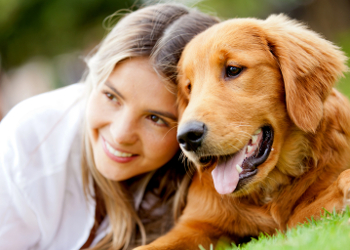
Cataracts are very common in dogs but not so in cats. A cataract is defined as a cloudiness or opacity to the lens of the eye. It is often confused with nucleur sclerois of the lens in the middle aged dog which produces a graying of the lens area in both the left and right eye at the same time. Cataracts can be juvenile (congenital or acquired early), pathological (secondary to Diabetes Mellitus) and senile (cataracts that develop in older dogs and very old cats.
When cataracts start to form, the affected lens in the eye takes on a milky like appearance. Over time, the cataract matures and the animal can lose sight in the eye. Dogs depend upon their sense of smell much more than they do vision. Dogs have limited color differentiation and are near sighted to begin with. Loss of vision in the dog is usually not too problematic. In the cat, senile cataracts can cause cats to not jump to places that they were accustomed to. Untreated cataracts can also “float away” elsewhere in the eye. This prevents drainage of eye fluid and can cause build up of intraocular pressure leading to glaucoma.
Many times a dog or cat do not show any clinical signs. Immature cataracts still allow the dog to see pretty well. Only than, when the cataract matures do they cause problems. Even than, if the other eye is not as advanced, the dog can adapt to even mature cataracts. When both are mature, an animal will start to bump into things and become startled when pet or stroked. Signs of blindness begin. Cats rarely suffer from cataracts until they are 15 years of age and up. By that time they are pretty feeble and often are not as active hence cataracts do not seem to bother them.
If suspecting cataracts originating from metabolic conditions such as Diabetes Mellitus, it is crucial to perform a CBC, Blood Chemisty Panel and a urinalysis.
Diagnosis of cataracts involves getting a good history and performing a detailed physical exam. The latter includes an in depth study of the eyes with an opthalomoscope. The eye is able to be studied from the cornea to retina.
There is no medical treatment associated with juvenile or senile cataracts. Those dogs diagnosed very early with diabetes mellitus are spared the development of severe diabetic cataracts. Cataract formation in these cases is proportionate to the amount of time the dog remains in a undiagnosed diabetic state. Juvenile and senile cataracts may be surgically removed and implanted with a spring fitting lens implant.
The prognosis for dogs and cats with cataracts is very good. Since dogs do not depend that much on visual acuity compared to the sense of smell, they do fine with cataracts as long as furniture is not rearranged and no sudden movements are made to touch the pet. Cats are very old when they get cataracts. Supplanting a favorite jumping spot with an ottoman can split the difference in height, making it easier for a cat to jump.



Cushing’s Syndrome is a debilitating disease seen in dogs that is caused by excess cortisol (the body’s intrinsic cortisone) formation in the adrenal cortex of the animal. Cushing’s Syndrome is caused by either a pituitary tumor (90% of the time) a tumor of the adrenal gland or by taking oral corticosteroids for a prolonged period of time (iatrogenic). Cushing’s Syndrome is most commonly seen in: Boston Terriers, Poodles, Bichon Frise, Dachshunds, Miniature Schnauzers and other small dogs. About 10% of canine diabetics develop Cushing’s Syndrome. Having to administer excess insulin to maintain a relatively stable blood glucose is a sign of something else going on. Insulin resistance is also a possibility but easy to differentiate from Cushing’s.
When Cushing’s Syndrome is in full swing, excess cortisol is running rampant in the animal’s body. On one side, it is immunosuppressed leading to more frequent bladder infections. On the other, the pituitary gland secretes excessive amounts of ACTH that stimulates the adrenal glands to produce excessive amounts of cortisol. This mechanism explains the majority of clinical signs in the dog. Cushing’s Syndrome is rarely seen in cats.
Clinical signs of Cushing’s disease are distinct in each case. All cases do not share the same clinical signs. The appetite increases. Some dogs have an increased thirst, some do not. The majority will have a pot belly appearance over the abdomen due to an enlarged liver and cortisol’s effect of thinning the rectus musculature over the lower (ventral) abdominal wall. Animals may also urinate more and have more frequent bladder infections. Dogs are also much more lethargic than normal. Other clinical signs are associated with the skin. Hyperpigmentation, frequent staphylococcus pyodermas plus calcinosis cutis are usually seen. In advanced cases central nervous signs are seen due to the enlargement of the pituitary gland. Head pressing is the most commonly seen sign but some animals may also seizure.
The most commonly used test to diagnose Cushing’s Syndrome is the ACTH Stimulation Test. The results of the test often do not conclusively diagnose the condition even though all the clinical signs are present. Waiting a month and retesting is often advisable. Dogs that had been treated for some allergy or atopic dermatitis with corticosteroids will not produce accurate results. The only safe corticosteroid that can be used clinically, without altering the true results, is dexamethasone. A CBC and Chemistry Profile are also used to check liver function and electrolyte levels as well as the sodium/potassium ratios.
Diagnosis of Cushing’s Syndrome is made by the history and physical exam findings as well as the results of the ACTH Stim Test. Rule outs must be done to rule out Diabetes Mellitus and other diseases that cause an increase in thirst or urination. A diagnosis is facilitated if the veterinarian understands the breeds of dogs most commonly associated with the disease.
There are three forms of Cushing’s Syndrome and they are treated differently.
1. Pituitary dependent: Dogs are treated with either Lysodren® or the newer drug, Vetoryl® (trilostane). Both are very good at treating the condition. Lysodren® does have side effects such as an upset stomach but can be managed with 5mg of prednisone several times per week.
2. Adrenal Tumors: Adrenal tumors are surgically removed to treat this condition. If surgery is not available, management can be attempted by using the above listed drugs.
3. Iatrogenic Cushing’s Syndrome: The offending oral or injectable corticosteroids have to be stopped. This is difficult because without corticosteroids a medical condition could worsen. With exogenous corticosteroid therapy, the adrenal glands stop making glucocorticoids. If corticosteroids are suddenly removed, the animal may go into shock. For this reason the animal must be tapered off of steroids over a long period of time. The adrenal cortex also produces mineralocorticoid agents, the most common being aldosterone which is needed for sodium regulation. This sometimes is needed to be added to the therapy via Percorten® injections every 26 days.
The prognosis for the majority of Cushing’s Syndrome patients is very good if diagnosed early. The most important determinant of clinical success is client education. It is crucial that dogs get regular medical checkups. In the beginning, the ACTH test is done every 2-3 months to check adrenal function plus other pertinent lab work and a physical exam. Most dogs need to be on appropriate medication life long. The disease is never cured but controlled. Most dogs feel so much better and have a great quality of life. Even those animals need to have blood work done at least twice a year. The most important take away point is to regulate the dog as quick and as best as possible. By bringing excess cortisol under control, the iso- enzyme of alkaline phosphatase (a liver enzyme) is inhibited or slowed. It is this inhibition that will slow down the growth of the pituitary tumor decreasing the chances of central nervous system signalment.



The eyelids of a dog or cat serve as an effective windshield wiper and wiper fluid cleaner of the cornea or front surface of the eye. By blinking of the eye and subsequent tear production, irritants and other small debris are effectively removed from the eye. The third eyelid is another effective cleaner of the eye. Behind it is a nicatating gland. It is this gland that prolapses over the third eyelid giving it a beet red oval appearance in the corner of the eye. The cause is a weakening in the connective tissue that normally anchors the gland behind the third eyelid. Cocker Spaniels, Beagles and Lhasa Apsos are the most commonly seen breeds with this condition.
Once the connective tissue anchoring the gland is weakened, the gland will prolapse or push over the third eyelid of the eye. It may occur in both eyes at the same time but is most commonly seen in one eye. Sometimes the other eye is not effected but in other cases the other eye has a Cherry eye months later! This growth is not painful or life threatening. Some gland prolapses can irritate the corneal surface but most dogs do not make a fuss about it.
Cherry eye is most commonly seen in young animals. Most dogs do not demonstrate any clinical signs. Some animals may have slight corneal irritation or a secondary bacterial conjunctivitis.
There is no specific lab test involving Cherry Eye. A CBC and Chemistry profile will probably be done since the repair is performed under a general anesthetic. I usually stain the corneal surface with Fluorescein strips to make sure there is no corneal irritation present.
The diagnosis is made by visualizing the cherry eye in a young dog; particularly in Beagles and Cocker Spaniels.
The majority of dogs with Cherry Eye show no clinical disease and it does not bother them or interfere with their lives. Most repairs are cosmetic, as most owners do not want to look at a piece of red tissue at the corner of their pets eye. Years ago, treatment was the surgical excision of the gland. This has lately fallen out of favor. Animals having had that surgery had problems associated with keratitis sicca (dry eye). Now a days, the gland is surgically tacked down behind the third eyelid. About 10% of those may reoccur. Since the other eye may act the same in the future, some veterinarians recommend that both eyes be done at the same time.
The prognosis for all cases of Cherry Eye is good as long as the gland is surgically tacked down.



The cause of Cheyletiella in dogs is a mite that lives off of cellular debris on the surface of the skin.
Cheyletiella is highly contagious. It is transmitted by direct to direct skin contact between dogs. They live on the skin producing dandruff and severe pruritus (itch) usually in young animals. Dogs and cats can get this parasite. It can be transmissible to humans even though humans are not a natural host. The parasite causes the greatest damage in young animals that have an immature immune system and transmitted easily in places where dogs are kept in close quarters such as animal shelters, pet stores and groomers.
The main clinical sign in pets is a severe itch and inflammation of the skin surfaces. Secondary bacterial infections may also occur. Much of the pruritus seems to be along the back of the animal. It is characterized as “walking dandruff disease”. The mite is pushing around dandruff and other debris and it appears that the dandruff is walking through the dogs coat.
In some cases, Cheyletiella can be seen crawling around with the naked eye. It is much easier to take a piece of tape, apply it to the skin than look for the parasite under a low magnifying objective microscope lens.
A diagnosis of Cheyletiella is made by observing the small yellow parasite directly on the skin or via a microscope. Also noting if the animal is young and has been around other animals in close quarters is helpful.
Many preparations that kill fleas also work killing the Cheyletiella mite. Simple sprays that contain pyrethrins can work but it is much more effective to use more modern products that are easier to administer. Selamectin (Revolution®) and milbemycin (Interceptor®) are good choices. If there is more than one pet in the household, all should be treated. Combs and pet brushes should be discarded and all bedding and pet blankets should be thoroughly cleaned and disinfected. Since humans are not the natural host, any parasites found on people will disappear upon removing them from the pets and environment.
The prognosis for the treatment of the Cheyletiella mite is excellent. However, the animal can be exposed to the same parasite over and over from infested animals that it comes into contact with.



Chocolate is irresistible to most people. It is also irresistible to most dogs. In people, it leads to excess calories and weight but it is toxic to dogs. Chocolate contains cocoa bean derivitives. The most toxic to dogs are theobromine and caffeine.
All chocolate is not created equally plus the chocolate toxic dose is different for a small animal compared to a large dog. Toxicity is based on mg/kg of theobromine or caffeine. Milk chocolate has a relatively low level of theobromine. Semi-sweet chocolate, which is used often on chocolate chip cookies as nuggets, has more toxic components than milk chocolate. Baker’s chocolate is the worst for pets as it contains toxic chemicals in the highest concentration compared to the other chocolates.
Clinical signs are based upon the amount of chocolate ingested and the type of chocolate. Early signs of irritability, pacing and nervousness are present. Toxicity of chocolate and bulk volume can cause vomiting and diarrhea. In more advanced cases the heart and respiratory rate increase and excess neurological stimulation can lead to seizures. Cardiac arrythmias can also arise.
Pertinent lab work is a CBC and Chemistry profile plus an electrocariogram to note if any heart arrythmias are present. Levels of theobromine in the blood can be assessed by an independent lab.
Diagnosis is made easily when the owner sees a pet ingesting chocolate or an empty chocolate wrapping. The history is extremely important. It can be difficult to actually diagnose if no one saw the chocolate ingested. A doctor can only than treat the clinical signs.
The treatment for chocolate toxicity varies on the type and quanity of chocolate ingested. If caught early, the animal is made to vomit with subconjunctival doses of apomorphine or an appropriate dose of hydrogen peroxide. This is followed up by multiple doses of activated charcoal. This treatment will eliminate as much theobromine from the stomach plus delay or prevent the absorption of theobromine into the general circulation. Advanced clinical signs require intravenous fluids to diurese the animal; ridding it of as much theobromine as possible. Excessive heart rate may need to be slowed by beta blockers or Ace inhibitors such as benazepril.
The prognosis for rapidly diagnosed and treated chocolate toxicity is very good. The prognosis is much more guarded when neurological signs and arrythmias are present. A more favorable prognosis for those cases occurs when the cardiac and neurological signs subside.
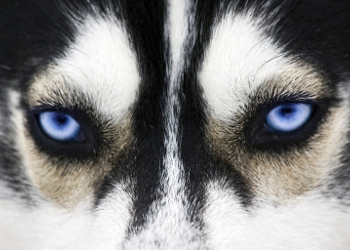


Cholangitis is often lumped into the category of cholangitis-cholangeohepatitis syndrome. Cholangitis is inflammation of the bile duct and associated intrahepatic ducts. The liver and gall bladder are anatomically situated together. If one is affected the other may also be affected. Cholangitis is not that common in dogs but it is common in cats. The causes include: bacterial infections and the result of bile duct obstruction. It may also be caused by diseases that are not directly related to the gall bladder. These include diseases of the intestinal tract and pancreas.
Bile is produced in the liver and stored in the gall bladder for when it is needed. When food reaches the small intestine bile is released into the lumen (opening) of the small intestine. Biles main function is to emulsify fats. When bile reaches the lower intestines it is recycled back to be used again. This is performed by the enterohepatic circulation of bile. Anything that interferes with the movement of bile, the consistency of bile or problems obstructing or inflaming the bile and liver ducts can lead to clinical signs.
Clinical signs associated with cholangiohepatitis include: fever, abdominal pain due to liver pain plus abdominal fluid, a yellowing of the skin (jaundice), renal failure and hypovolemic shock. Most animals are weak and lethargic. Cats will lose weight extremely fast.
All cholangitis patients require a complete diagnostic work up. This entails a CBC and Chemistry profile and other tests that may be needed when other organ systems are involved. A urinalysis may show bile pigments present. Chemistry profiles will show elevated bilirubin plus an elevation in liver enzymes. The liver and surrounding tissues may be visualized by radiographs or ultrasound. A diagnostic laporotomy may be performed to actually view the liver and gall bladder.
Diagnosis is made by combining the results of the history, physical exam and pertinent lab data.
The treatment for most cases of cholangeohepatitis is supportive. If a bacterial infection is suspected the animal will be placed on broad spectrum oral or intravenous antibiotics. Intravenous fluids are always needed to maintain the blood pressure and renal perfusion. Intravenous feeding with dextrose and vitamin B12 & K is crucial. Care must be taken to control the clotting ability of the blood. Clotting factors are made in the liver and signs of DIC may develop. This is a problem when the clotting mechanism goes awry and the blood takes on the viscosity of water. If bile appears thickened and thick, the patient may require Actigall® which improves the stasis or movement of bile. The goal of therapy is to heal the hepatic and bile tissues so normal functioning can return. If the disease is extrahepatic, those diseases such as pancreatitis must be treated. Some cases require surgical intervention. Gall bladder obstruction is one of them. Animals are eventually discharged on an appropriate diet such as Hill’s Prescription Canine l/d or Hill’s Prescription Feline l/d, antibiotics, nutrical for caloric support and other supportive care measures.
The prognosis for cholangitis patients depends upon: the severity of the disease, if other organ systems are affected plus the time the animal has been ill. Once the animal has been hospitalized, the clearing of jaundice has occured, normalization of the CBC plus the animal’s general demeanor and appetite has returned; the prognosis improves. The dog or cat is not out of the woods even after discharge. It is imperative that animals receive follow up physical exams and lab work to follow the condition and be on the alert for future flareups or relapses.



Coccidia is a uni-cellular parasite seen in dogs and cats that produce loose stool in some cases but bloody diarrhea in severely infected animals. The cause belong to the genus Isospora sp and Eimeria sp.
Coccidia is transmitted via the oral fecal route. Ingestion of contaminated feces is the usual route of transmission. It is seen in young cats and dogs since their immune system is immature plus many young animals are kept in close quarters such as pet shops or shelters. Many kittens and puppies pick up the parasite from their infected mother. The parasite reproduces in the cells lining the small intestine. The cells die, eventually releasing a batch of small organisms that lead to clinical signs.
Some animals have a very light infection and are usually asymptomatic. Others will have a mucous stained loose stool and in severe infections, puppies and kittens can have a hemorrhagic enteritis that requires immediate attention.
The age of the animal and a fecal flotation will easily diagnose the condition.
Diagnosis is made by a fecal flotation sample and animal history.
Most animals are not really sick. All of them should be treated with sulfa type drugs. The most common is Albon® (sulfadimethoxine). Treatment is administered daily for three weeks and a fecal exam is performed to make sure the entire population of organisms has been rid of. Animals suffering from acute diarrhea will require further medical treatment: fluids, antibiotics and anti-diarrheals.
The prognosis for treating coccidia is excellent. Most animals are young but they are also resilient. Reinfection is possible so it is important to pick up all outdoor bowel movements and keep animals away from potentially ill animals.



Most pets enjoy a happy life and the most important thing is to please their owner. Going on walks, trips to the store, swimming in the pool and being called for that well deserved meal is a true pleasure for dogs. An animal ages in front of our eyes. The muzzle may grey, the animal may have problems moving around or getting to the food bowl. Walks that were looked forward to are more difficult due to arthritis and muscular atrophy. The brain also changes along with the neurotransmitters and this degregation leads to the clinical signs of cognitive deficiency syndrome.
Many of the chemical and physical changes in dogs and cats are similar to human Alzheimer patients. A degregation in the lipid layer of the myolin sheath is a big cause in these patients. Because of these chemical changes, many of the taken for granted behaviors such as recognizing family members, looking for the food and water dish and going outside to go to the bathroom are noticed.
Animals with Cognitive Deficiency Syndrome do not demonstrate all known symptoms. All animals suffering from this disease are different. Each animal demonstrates signs in his or her own personal way. The most common signs are: disorientation, forgetting where the food and water bowls are, forgetting the response to verbal commands, being startled by someone petting the animal, urinary or fecal incontinence, lack of appetite, irritability and personality changes.
Most patients are senior dogs and cats. A CBC and Chemistry profile need to be done to rule out other physical causes of an animals behavior change. Radiographs and a general body ultrasound may be performed to rule out other conditions or those associated with cognitive deficiency syndrome.
Most cases of Cognitive Deficiency Syndrome are made by obtaining a complete, detailed history plus physical exam. Diagnostic lab work will help to rule out conditions or diseases not associated with this disorder.
There is no actual specific treatment for Cognitive Deficiency Syndrome. There is hope though. Most veterinarians will perform a therapeutic trial using the drug Anipryl® (selegiline). This drug increases the amount of circulating dopamine. Dopamine is a neurotransmitter that effectively communicates between brain cells. Some dogs respond to the drug, others do not but it definitely is worth a try. Most of the supportive care is provided by the owners at home. A lot of TLC goes a long way. Go slow and talk slowly to the animal. If it needs time to get up and figure out where it is, so be it! Provide appropriate support on slippery tile or wood floors. Animals in this condition do not like change so try to keep the home environment stable. Strange people may also upset the animal. Praise goes a long way in making a pet feel comfortable.
The prognosis for the individual animal varies since each animal is different in his or her own right. Mild degrees of cognitive dysfunction can lead to a happy life. Animals that are unable to stand or are demonstrating fecal or urinary incontinece do not have a good prognosis. Our animal friends have given us so much love during their short lives that it is imperative that we treat them with respect and devotion as they age.



The colon is part of the lower digestive tract in the mammalian body. Most of the water in the intestinal tract is reabsorbed into the general circulation from the colon. In animals there is an ascending, transverse and descending intestinal loop. Causes of colitis are: bacterial, viral, foreign body, tumors, immune-mediated, parasitic, food allergy and pancreatitis.
The normal physiologic function of the colon is to form stool and absorb water from the colon back into the general circulation. When anything irritates the colon mucosa, clinical signs will begin and most commonly they are associated with loose stool and mucous production.
The most commonly seen clinical signs in general colitis are: straining to defecate, loose stool, mucous production and bright red blood coating the stool. Mucous is a normal protective substance of the colon lining and bleeding arises from rupture of colon capillaries. The blood is bright red not dark, since the bleeding originated in the lower bowel and not in the small intestine. In that case the blood appears as dark, tarry stools.
A CBC and Chemistry Profile are performed to look at the electrolytes, organ function and the hematocrit. The latter being elevated in most cases of dehydration. Radiographs and ultrasound imaging can help study the colon plus search for any tumors or foreign bodies present. A fecal flotation test should be done as well as any other organ specific test.
Diagnosis is made by obtaining a detailed history and physical exam. Coupled with diagnostic lab work a working diagnosis of colitis can be made.
Treatment is geared at finding the exact cause of the colitis in the first place. General cases are treated with fluids, subcutaneous or intravenous, drugs that slow the motility of the gastrointestinal tract (aminopentamide), intestinal coating agents (Carafate®), Metamucil® or facsimile plus vitamins and minerals. Dogs and cats do fantastic when put on Hill’s® Prescription Canine i/d or Hill’s® Prescription Feline i/d. It is recommended many times to keep the pet on the special diet for the remainder of its life. Antibiotics may be used and in the case of immune-mediated colitis, corticosteroids such as budesonide are often used.
The prognosis for acute colitis that is diagnosed and treated early is good. Colitis that is caused by tumors/neoplasms has a much more guarded prognosis. Colitis that is chronic and caused by bacterial, immune-mediated and idiopathic are more guarded. Owners have to understand that flareups or relapses can occur anytime if the animal or its immune system is stressed by exterior factors or by conditions that weaken the cellular or humoral immunity.
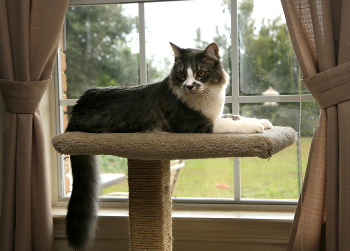


The heart consists of a left side and right side. The function of the heart is to pump oxygenated blood to all body tissues as well as exchanging deoxygenated blood in the lungs which is converted to oxygenated blood than out the aorta to service bodily needs. Failure of the valves pumping this blood as well as dilating of the myocardium (dilitative cardiomyopathy) can lead to congestive heart failure.
Congestive heart failure is seen commonly in small breeds of dogs such as: Poodles, West Highland Terriers, Pugs, Miniature Schnauzers, Yorkshire Terriers and others. Cats and large dogs that develop cardiomyopathy also can suffer from congestive heart failure.
The tricuspid valve is the main valve on the right side of the heart. The mitral valve is the main valve on the left side of the heart. In right sided heart failure, the tricuspid valve becomes leaky and blood backs up in the liver. Fluid buildup there leads to fluid in the abdomen (ascites) and buildup of fluid in the limbs (anasarca). In left sided heart failure the mitral valve becomes leaky allowing fluid buildup in the lungs. This causes all sorts of respiratory problems such as pulmonary edema. It is this basic pathophysiology that explains the majority of clinical signs seen. Dilitative cardiomyopathy can cause one or the other types of failure or both if both valves are effected.
The most common clinical signs seen in congestive heart failure are: anorexia, weakness, coughing and respiratory difficulties known as dyspnea. Some animals are so weakened and lacking oxygen that their tongue can turn blue (cyanotic) just by over excitation or exercise. Dogs with right sided heart failure will also have a distended abdomen due to fluid accumulation and liver enlargement. The heart also enlarges and puts pressure on the trachea (windpipe). This crucial organ passes right over the base of the heart. Enlargement of the latter puts pressure on the trachea causing a typical “heart cough”. This cough is extremely persistent making it difficult for the animal to rest or even eat. For these reasons and organ dysfunction, many dogs and cats lose weight extremely fast. Due to the heart cough and pulmonary edema, animals have an extremely difficult time getting comfortable. Many will sit with their elbows abducted (opened outwardly) to allow the lungs to take in as much air as possible. This puts strain on the animal’s musculature, weakening it further.
A complete cardiac workup needs to be performed. This includes a CBC and Chemistry profile. A urinalysis will also be performed. This provides a minimal database for the doctor. Imaging of the thorax is crucial so radiographs and or ultrasounds are performed to visualize the pulmonary edema as well as heart enlargement. By taking special linear measurements of the width and height of the heart and comparing it to the distance between certain vertebrae, veterinarians can say specifically how large that heart is for that animal. Electrocardiograms are also done to view the electrical activity of the heart. To differentiate between cardiac and pulmonary disease, the Idexx® Pro BNP test is usually run. This gives a quantitative face to the heart disease so individual therapy can be introduced.
Making a diagnosis of congestive heart failure is pretty straight forward. A complete history is important. Likewise, a complete physical exam. Auscultation of the chest will produce easily detected murmurs as well as lung sounds suggestive of pulmonary edema. Diagnostic lab work will confirm the presence of congestive heart failure and the Idexx® Pro BNP test will differentiate between pulmonary and cardiac disease.
Congestive Heart Failure can not be cured. Medical care is geared towards strengthening the heart muscle, controlling the pulmonary edema plus decreasing the return blood flow pressures to the heart. Bronchodilators are used to open up the bronchi so that more air can be exchanged. Special low sodium diets are employed to reduce fluid retention caused by excessive sodium. Vetmedin® is commonly used in dogs (not approved in cats) to strengthen heart tone (inotropic). Furosemide is used to treat the pulmonary edema as well as also help decrease the return blood flow pressure to the heart. Benazepril, an ACE inhibitor, decreases return flow blood pressure and will help maintain a stable urine protein creatinine ratio which will minimize glomerular issues of the kidneys secondary to the heart failure. Theophylline is used as an effective bronchodilator. The majority of the coughing subsides when the pulmonary edema is cleared but some animals have that persistent heart cough due to tracheal pressure and are put on low doses of Hycodan® or Butorphanol. Effective diets that can be fed to dogs and cats are available.
The short term prognosis for dogs diagnosed and treated early for congestive heart failure is good. They all feel so much better after treatment and their quality of life is good. Most veterinarians do not “throw” all conceivable drugs at any cardiac patient but tailor the therapy to suit the animals medical needs. It is extremely important that dogs and cats receive frequent medical exams and repeat blood work to insure all is working well. As the disease condition worsens, more drugs can be added or the dose of current drugs can be increased. There will come a time where the heart failure does not respond to any medical therapy and at this point the prognosis is grave.




The conjuntiva is essential protective tissue that protects and covers the globe of the eye and the inner surface of the third eyelid. Inflammation of this tissue is caused conjunctivitis. Conjunctivitis can be either bulbar or palpebral in origin. The causes of conjunctivitis are varied. Bacterial, viral, foreign bodies, allergic irritants, secondary to glaucoma, trauma, and deficiency in tear production are just some of the more common causes of the disease in dogs and cats.
Animals may develop conjunctivitis secondary to a primary disease. Canine upper respiratory disease is one. In cats, it may be secondary to rhinotracheitis and calicivirus infections.
Excessive eyelid hair poking the eye surface and the conjunctiva can cause inflammation of the tissues. This condition is known as entropion. It is seen in English Bulldogs and other breeds that have loose periocular skin.
When some agent irritates the conjunctiva the tissue becomes inflamed and is often beet red. This inflammation causes intense eye pain. Depending upon the actual cause, conjunctivitis left untreated can damage the rest of the eye structure.
Conjunctivitis can occur only in one eye or simultaneously in both eyes at the same time. Trauma and or irritant based conjunctivitis usually occurs only in the affected eye while bacterial and viral conjunctivitis usually affects both eyes at the same time. The animal usually squints since the eye is extremely sensitive to light exposure. It is very painful. There is a muco-purulent discharge from the eye. The structure of the globe may look blood shot. The tissues of the eyelid (palpebral) conjunctiva are swollen and dark red. Because this is painful, dogs and cats may rub their face on the floor or try to use their paw to rub the eye. They may also be off their food because it hurts so much.
Conjunctivitis does not often exist on its own. It is important to perform a fluorescein strip test to rule out corneal ulcers as well as a tonometer exam to rule out glaucoma. A complete opthalomoscopic exam is performed to visualize the structures of the eye.
A diagnosis of conjunctivitis is made by the history, physical exam and laboratory findings.
Treatment of conjunctivitis is geared at treating the primary cause and providing relief for the affected eye. If the cause is bacterial or viral oral antibiotics may be prescribed as well as a topical antibiotic such as neomycin, polymyxin, and bacitracin. If the conjunctiva is inflamed and there are no corneal ulcers present, topical eye ointments may be prescribed with a corticosteroid present to provide pain and inflammatory relief. Excessive ocular pain may also be controlled with 1% atropine opthalmic ointment. Primary causes of corneal ulcers and glaucoma are also treated, if present. Animals with dry eye may need tear supplementation plus topical cyclosporine drops. Animals with entropion may need corrective surgery.
The prognosis for conjunctivitis is excellent as long as it is diagnosed and treated early, as well as trying to treat the primary cause of the disease. Most animals should be kept out of direct sunlight as it is extremely painful.




Coronavirus is a highly contagious virus seen in dogs and cats. There are several serotypes known. The virus in dogs is accociated with a yellow, green colored diarrhea. It is often misdiagnosed as parvo virus. In cats, the intestinal version exists and serologically very difficult to differentiate it from the coronavirus that causes Feline Infectious Peritonitis.
The canine coronavirus replicates in the upper gastrointestinal system. Cellular death leads to the clinical signs of diarrhea. This disease is much less severe than Parvo Virus in dogs. Cornonavirus has a high morbidity rate (highly contagious) yet it has a very low mortality rate.
Although the disease is highly contagious, many dogs with coronavirus do not even show any clinical signs. Maybe lethargy or a brief loss of appetite but nothing more. Other animals will have a green/yellow diarrhea. The animals that are injured the worst are young puppies that, at that point, do not have a mature immune system to fight off the disease. Animals with Parvo Virus and Coronavirus are dragged down even farther by having a mixed infection.
Many intestinal diseases are handled in a similar fashion. A CBC and Chemistry profile may be run to check organ function as well as a urinalysis. A fecal check is extremely important as parasites will prolong or exacerbate a dog trying to recover from Coronavirus.
Diagnosis is made by the history and clinical signs. Often it is difficult to get an exact diagnosis. This is not problematic since therapy overlaps a lot on many viral enteritis cases. Lab tests do exist that can check the antibody titer to canine coronavirus.
Many dogs are asymptomatic and or have a basic case and do not require any treatment at all. Their immune system resolves everything. Weakened young animals may need fluids and aminopentamide to rehydrate and control diarrhea. An appropriate wormer is given orally for intestinal parasite control. Antibiotics may be used to minimize the chance of developing secondary bacterial intestinal diseases. Dietary management may entail hamburger and rice at a ratio of 1:3 or the owner may purchase Hill’s® Prescription Diet Canine i/d. Fluid therapy consisting of a sports drink or ice cubes made of the same will help replenish lost electrolytes.
The prognosis for the majority of coronavirus cases is excellent. It has a very low mortality rate. Weakened puppies with coronavirus that are severely dehydrated are at a greater risk of not surviving.
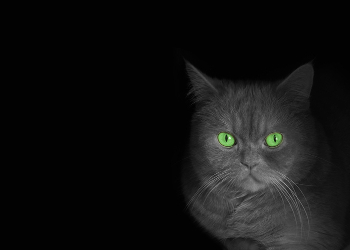



The cruciate ligaments are a part of the most complex joint in the mammalian body, the knee! These two ligaments, one cranial and the other caudal cross to support the tibia (the bone below the thigh bone) and prevent it from twisting. It keeps the knee in place and prevents excess extension of the knee joint. The most common cause of cruciate damage is acute trauma. Car Accidents and falling down stairs are some trauma causes. Other causes are chronic. These injuries occur over time and can than cause clinical signs of cruciate damage. Obesity is also a factor in cruciate damage.
When the support of the cruciate ligaments falter, pain and arthritis become a problem. Cruciate ligament disease can be partial or complete. In veterinary medicine, the anterior cruciate ligament is torn much more commonly than the posterior ligament. It can occur in any dog but is predisposed to young to middle aged active big dogs. Those animals that are obese are at further risk. In chronic cases, the cruciate damage occurs over time. The ligament stretches and relaxes, than reaches a breaking point and ruptures completely. This is seen in dogs a bit older than the acute form and it is usually presented in both hind limbs.
The most common clinical sign in dogs is lameness in the affected hind limb. It can be painful. The joint may feel warm and inflamed also.
The knee is a complex joint so it is prudent to radiograph and or ultrasound the knee joint to make sure there are no other causes of the lameness in the joint such as fracture of the tibial crest. Radiographs can not show the ligaments but will show the anatomical placement of the bones forming the knee joint. Ultrasound will show the cruciate ligaments so it can provide a definitive diagnosis of cruciate disease.
Diagnosis of cruciate disease starts by obtaining a history. Has the dog jumped and came down wrong? Has there been some other type of trauma? A physical exam is crucial. There are two tests veterinarians use. One is the drawer response. The femur is held with one hand and the tibia is moved forward like a drawer. If this motion occurs, it is positive for cruciate disease. In the tibial compression test, the femur is held in one hand and the ankle of the dog is flexed. If there is any movement of the tibia, there is probable cruciate disease. That physical is than combined with findings from an ultrasound test to make the diagnosis.
Treatment is geared towards stabilizing the knee joint. This is accomplished by medical and or surgical care. In little dogs under 30 pounds many will do with conservative care. This includes rest, anti-inflammatory drugs such as Rimadyl®, physical therapy such as swimming plus a weight control program if the dog is overweight. Surgical correction should be performed by a board certified orthopedic veterinarian. It is the treatment of choice for bigger dogs. One of the most favored surgical techniques is TPLO; a tibial planing procedure. Grafts are used in human ACL issues but not so in dogs. It is the vector forces in the canine knee that causes problems. Controlling those forces is what the TPLO attempts to do. A cut is made and the tibia is rotated so as to be about 90 degrees to the attachment of the quadricepts attachment. Post operative care is ultra important. The dog has to have its activity restricted for at least 2-3 months. Walks can be done but only on a leash and the animal should be crated or kept in a small room while owners are away.
The prognosis for cruciate disease is good as long as it is promptly diagnosed and treated. Dogs with concurrent arthritis may take longer to achieve success. Owners must follow an exact treatment and post operative plan such as physical therapy and weight control, if needed. It may be difficult but the animal can injure the joint again if the same level of activity is maintained post operatively. Arthritis may continue to advance but the dog is better off after having had a TPLO procedure.
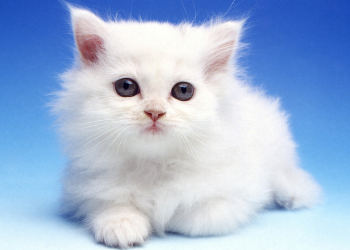



A cyst is any hollow space in any tissue that has a fluid mass in the center. True cysts will have a secretory layer known as the cyst wall. Cysts can be classified into: true, false, follicular or sebaceous cysts. The cause of cysts is varied. In follicular cysts localized infection and irritation of the hair follicles can cause a cyst. Comedomes are another type of cysts seen in Miniature Schnauzers with Cushing’s Syndrome. Other cysts may be congenital in origin or form out of faulty glandular secretions.
In follicular cysts localized infection and irritation of the hair follicles can cause a cyst. Other cysts may be congenital in origin or form out of faulty glandular secretions. Cysts can occur anywhere on the dog or cat body. A cyst may take on the behavior in the anatomical area of the body it is located. Cysts located on the nostril will often be pigmented and contain a dark pigmented secretion. The discussion here is only on non-cancerous lesions. Many of these cysts themselves can become further infected. Up north in cold weather, anything above the skin surface may firm and than ulcerate. This causes the animal to lick the area and bite at it.
Various growths may occur on any animal. These growths are usually round and may have abnormal surface areas. Some growths like comedomes are noticing in dogs demonstrating signs of Cushing’s Syndrome. Otherwise very few signs are seen. Some may be indirect such as a dog or cat licking a certain part of the body.
A CBC and Chemistry Profile are completed to assure safety during the surgical anesthetic procedure.
Diagnosis is made by observing a cyst like growth on a dog or cat. A veterinarian may try to aspirate cells or fluid from the cyst to observe under a microscope to help point him or her in the right direction.
Treatment is usually surgical. This may be done with a scalpel or laser surgery. Sometimes, the cyst may disappear or even fall off hence no further treatment is needed. The cyst is excised and usually sent to a lab for a histopathological diagnosis. It is this diagnosis that is the important one. A cyst may “look” like a cyst but may be something totally different to a pathologist. Sutures or medical glue is applied to close the wound. Astringents may work in some cases. Owners can try those first if they wish, than surgery if that fails.
If the primary cause of the issue is a cyst, surgical excision of it produces an excellent prognosis. Cysts associated with an endocrine disease are different. The cyst may be successfully removed but the dogs prognosis is tied to the primary medical condition.




Cystitis is defined as an inflammation of the urinary bladder in the dog. Cystitis is most commonly seen in female animals and is usually caused by a bacterial or mixed bacterial infection. E. coli, Pseudomonas aeringinosa and Staphylococcus sp are common causes of cystitis (also referred to as an UTI). It may also be caused by taking corticosteroids. This can occur also in Cushing’s Syndrome where there is excess cortisol produced by the adrenal glands. Bladder stones also can exacerbate a UTI. In intact males, prostate problems can also predispose the animal to cystitis. Diabetic patients are also more prone to developing cystitis.
Male animals are less prone at getting cystitis. One of the main reasons is the “huge” distance from the exterior urethral orifice (tip of the penis) to the bladder. This distance prevents many infections. In females, the urethra is very short. Infections are usually called “ascending infections” since the bacteria creep up the external urethral orifice from the vagina to the bladder. This is a very short distance.
Urine is composed of soluble waste materials and water. Bacteria such as Escherichia coli will “split” urea into its separate components. Urea is the waste product of protein metabolism and is manufactured in the liver and secreted into the urine. The split produces ammonia. Ammonia is alkaline therefore raising the pH of urine to over 7. Urine is normally slightly acidic. This favors bacterial reproduction and certain minerals can come out of solution to form crystals; most commonly- struvite, oxalate or urate.
The most commonly seen clinical signs in dogs are: urinating blood (hematuria), straining to urinate (estranguria) and the desire to frequently urinate (pollakiuria). Owners will often let their dog outside and watch it squat to urinate every few seconds or so. The animal may than come inside and urinate on the floor. If urinary crystals are present, they have very sharp edges and poke the lining of the bladder. Cystitis hurts and a dog may frequently lick the vulvar or perineal region in an attempt to alleviate the discomfort. There may also be a foul smelling vaginal discharge secondary to the infection.
A CBC and Chemistry profile are always performed to rule out any general (systemic) medical cause of urinating behavior such as Diabetes mellitus and Cushing’s Syndrome. These are easily differentiated from straight urinary tract infections. A urinalysis is always performed. The liquid is tested to check the pH of the urine and the presence of non visual blood. The sample is spun down and than placed on a microscope slide to look for sturvite or oxalate crystals in the urine. To determine the bacterial cause of the cystitis, a culture of the urine is done by an outside lab. If bladder stones are detected, the best way to visualize them is by ultrasound or a lateral and ventral radiograph of the lower abdomen. If there are no bacteria or stones present, yet signs of cystitis persist the veterinarian will perform a contrast study of the bladder. A common technique is called a pneumocystogram where air serves as the contrast media when injected into the bladder. Diverticulum (a small pouch off-shoot within a hollow structure) and other causes of cystitis may be found. Hypaque® is also used for the same function.
Diagnosis is made by obtaining a medical history of the usual owner complaints such as: frequent urination, straining to urinate and wanting to urinate more frequently. A physical exam is performed and the bladder is palpated. Many times veterinarians can palpate bladder stones making things much easier to figure out. Combining these findings with all pertinent lab data easily makes the diagnosis.
As with most things in medicine, treatment of cystitis is based upon the primary cause of the condition in the dog. Diabetes mellitus and Cushing’s Syndrome has to be treated to gain any traction on a urinary tract infection. If bladder stones are found they will have to be dealt with surgically or special stone dissolving diets. In a bacterial cystitis, antibiotics are prescribed for at least 2 weeks. One of the big failures in treating a UTI is insufficient time on antibiotics. This produces a recurrent infection or even a mixed bacterial infection. A recurrent infection has the same bacteria as before. They just weren’t killed by long enough time on antibiotics. Mixed infections are those with several types of bacteria present. If one set of antibiotics do not work, a culture will be done to figure out which one will work.
Adding a small amount of cranberry juice at home will acidify the urine making control easier. The dog should be encouraged to drink plenty of water. This will help to rinse out as much material in the bladder as possible. This is also accomplished by letting the dog out to urinate even if it doesn’t have to go. Just by emptying as much of the urine in the bladder helps treat and control future episodes of cystitis.
What is important is dietary control. Special diets have been formulated that are restricted in ash content; particularly magnesium. Increased amount of sodium are included to make the animal drink more water. These diets are extremely effective in treating and preventing UTI’s in dogs. A prime example is Hill’s Prescription Diet Canine c/d. Even when this therapy has been followed it is crucial that owners take a urine sample to the medical office. Repeat urinalysis’ are an important diagnostic tool used to spot infections before clinical signs are noticed. Collecting a urine sample is easy. First thing in the morning, put the dog on a leash and go outside with a small paper plate and stick it under the dog when she squats to urinate. Medical offices only need about a tablespoon. If the dog goes on the floor, use an eyedropper and put it into a clean container. Since cultures will not be taken from either technique, refrigeration is not necessary.
Prognosis for most bladder infections is good with rapid diagnosis, treatment and follow up care. Prognosis of systemic diseases is most important when dealing with secondary bladder infections. Some animals are very difficult to treat and have many recurrent infections. Keeping animals on antibiotics forever does not work as veterinarians will than be dealing with antibiotic resistant infections. Chronic bladder infections have a thick bladder wall which means a smaller cavity for urine collection plus decreased contractability of the detrusor muscle. Urine that should go outside during micturition (urination) stays inside making the UTI worse. The management of these cases can be difficult.

